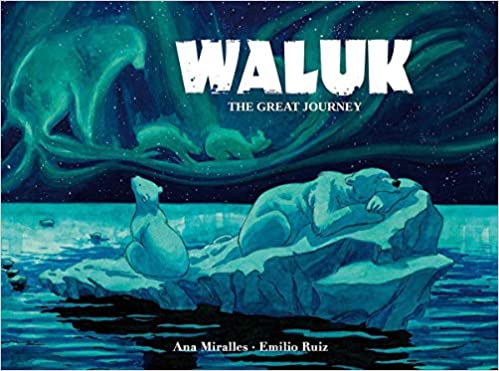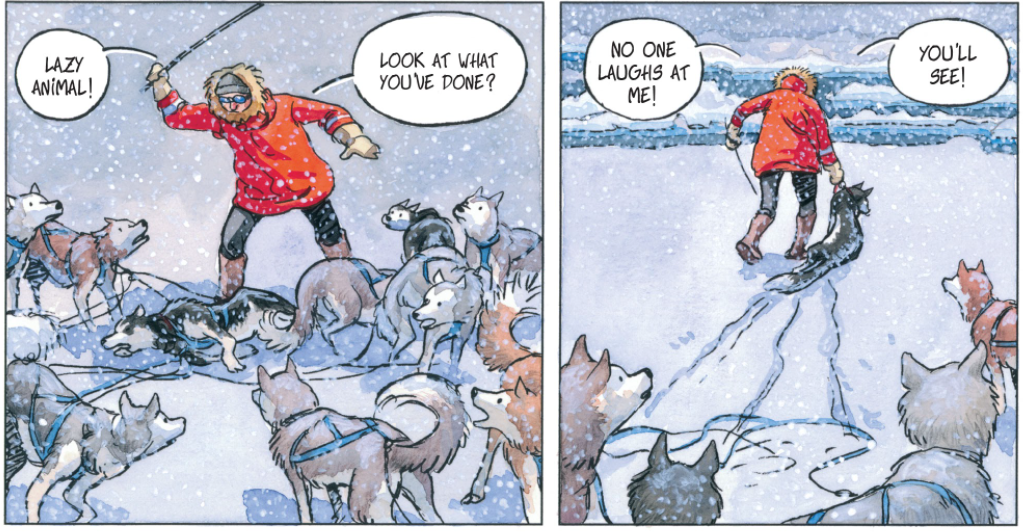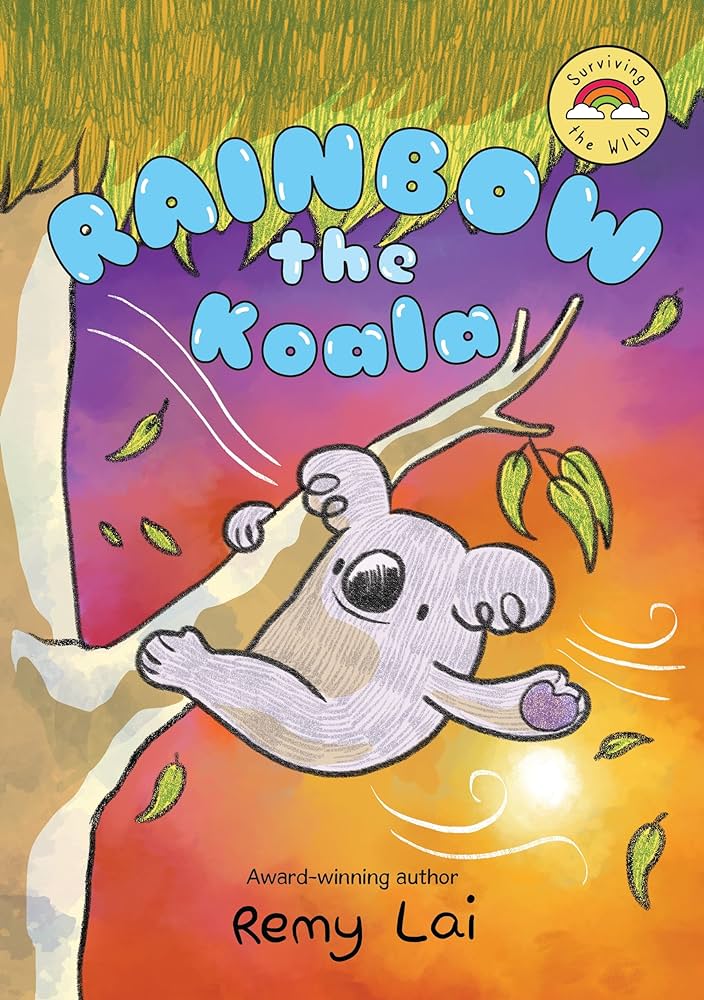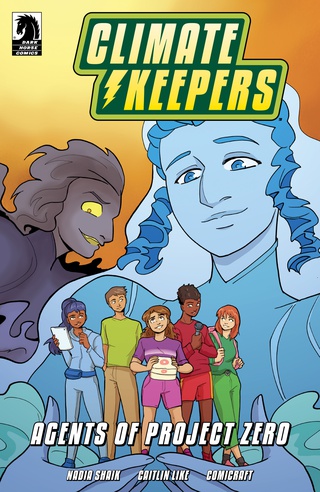“Humans! How insignificant they are, thought Valkia. They always seemed to be somewhere else, unable to respect the land that feeds them, or to appreciate the breeze that brings endless aromas… The only thing that seemed to please them was to surround themselves with inedible, smelly things. Every day, she grew more and more proud to be a bear!” – Waluk: The Great Journey, p. 64.
| Creator(s) | Emilio Ruiz (author), Ana Miralles (illustrator), Mike Kennedy (translator) |
| Publisher | Magnetic Press |
| Publication Date | 2021 |
| Genre | Animal, Fiction |
| Environmental Issues and Themes | Climate Change, Melting Ice Caps, Habitat Destruction, Animal Abuse, Endangered Animals |
| Protagonist’s Identity | Nonhuman (Animal), Male |
| Protagonist’s Level of Environmental Agency | Level 3: Moderate, Plot-Driven Environmental Agency |
| Target Audience | Middle Grade |
| Setting(s) | Arctic |

Environmental Themes
Originally published in Spanish in four installments, this graphic novel is the sequel to Emilio Ruiz and Ana Miralles’s 2013 comic Waluk. The narrative takes place after the events of the previous comic, where young polar bear Waluk breaks into a human research facility to free his older companion–a male polar bear whose name has inexplicably been changed here from Manitou to Eskimo, a derogatory term that has been rejected by Indigenous peoples. Now, the two anthropomorphized bears wander through the warming Arctic, searching desperately for food. The comic repeatedly highlights the ways that climate change impacts the bears as they struggle to find prey and swim increasingly long distances between the melting ice.

Humans appear frequently in the comic and repeatedly inflict harm on the environment, both intentionally and unintentionally. For instance, a passing ship pollutes the Arctic Sea and drops a storage container that both humans and the bears investigate, causing conflict between the two species. Additionally, a significant portion of the plot revolves around a sled dog owner who abuses his huskies, running one dog to exhaustion and then dumping him into the freezing waters, where Waluk and Eskimo rescue him. At the conclusion of the comic, the owner plans to kill all of the dogs and abandon his failing business. However, Waluk, Eskimo, the rescued husky, and an owl team up to save the dogs. During the rescue, the legendary “Tuhis the Great Dog,” a enormous sled dog that Miralles depicts as larger than a house, appears and attacks the greedy sled dog owner. The comic concludes with one dog living wild in the Arctic with the bears, while the rest of the team resolves to find a sympathetic human to adopt them.
In a School Library Journal review of Waluk: The Great Journey, Elizabeth Nicolai astutely notes that Ruiz’s characterization of the animals harmfully appropriates Indigenous cultures, writing, “The animal characters appear to come from a variety of legends, some of which seem to be made up (“Tuhis the Great Dog”), others of which are appropriations and misrepresentations of Indigenous legends such as Nanook the Great Bear (in Inupiaq culture, he is mostly an arbiter of human hunting success, not a helper to polar bears as depicted here). Because no context is given for any of these names or legends, there is no way to know without independent research what is real (very little) and what is invention or appropriation (most of it).” Additionally, the comic’s human characters are primarily portrayed as white; the exception is an Indigenous woman who appears at the conclusion with Tuhis the Great Dog as a Magical Native American.

Additional Resources
Nicolai, Elizabeth. “Middle Grade Graphic Novels: Waluk.” School Library Journal, vol. 67, no. 3, March 2021.
MacMillan, Graeme. “How Polar Bear Tale ‘Waluk’ Brings Climate Change to Life.” The Hollywood Reporter, 12 November 2020, https://www.hollywoodreporter.com/movies/movie-news/how-polar-bear-tale-waluk-brings-climate-change-to-life-4091820/.



